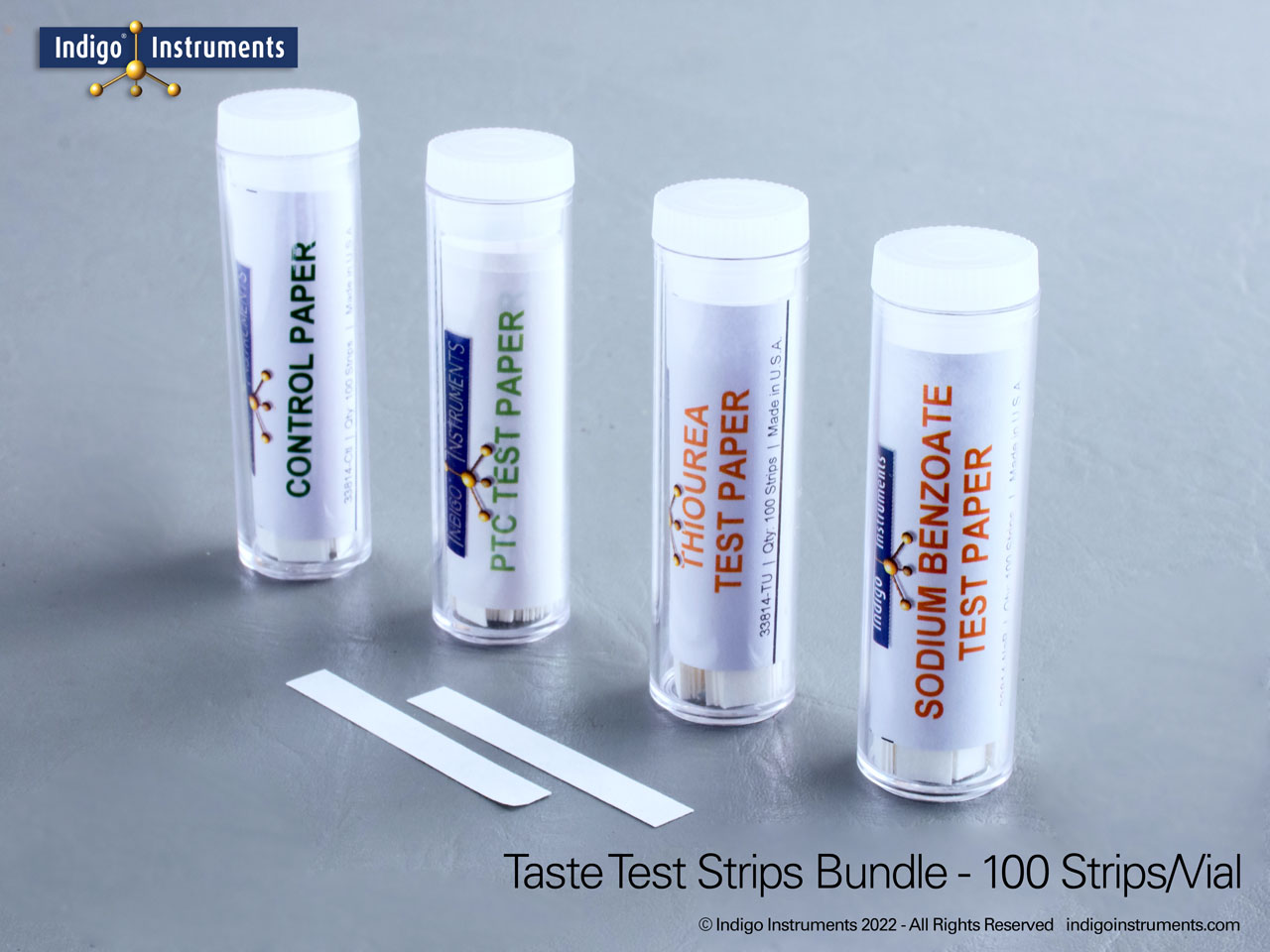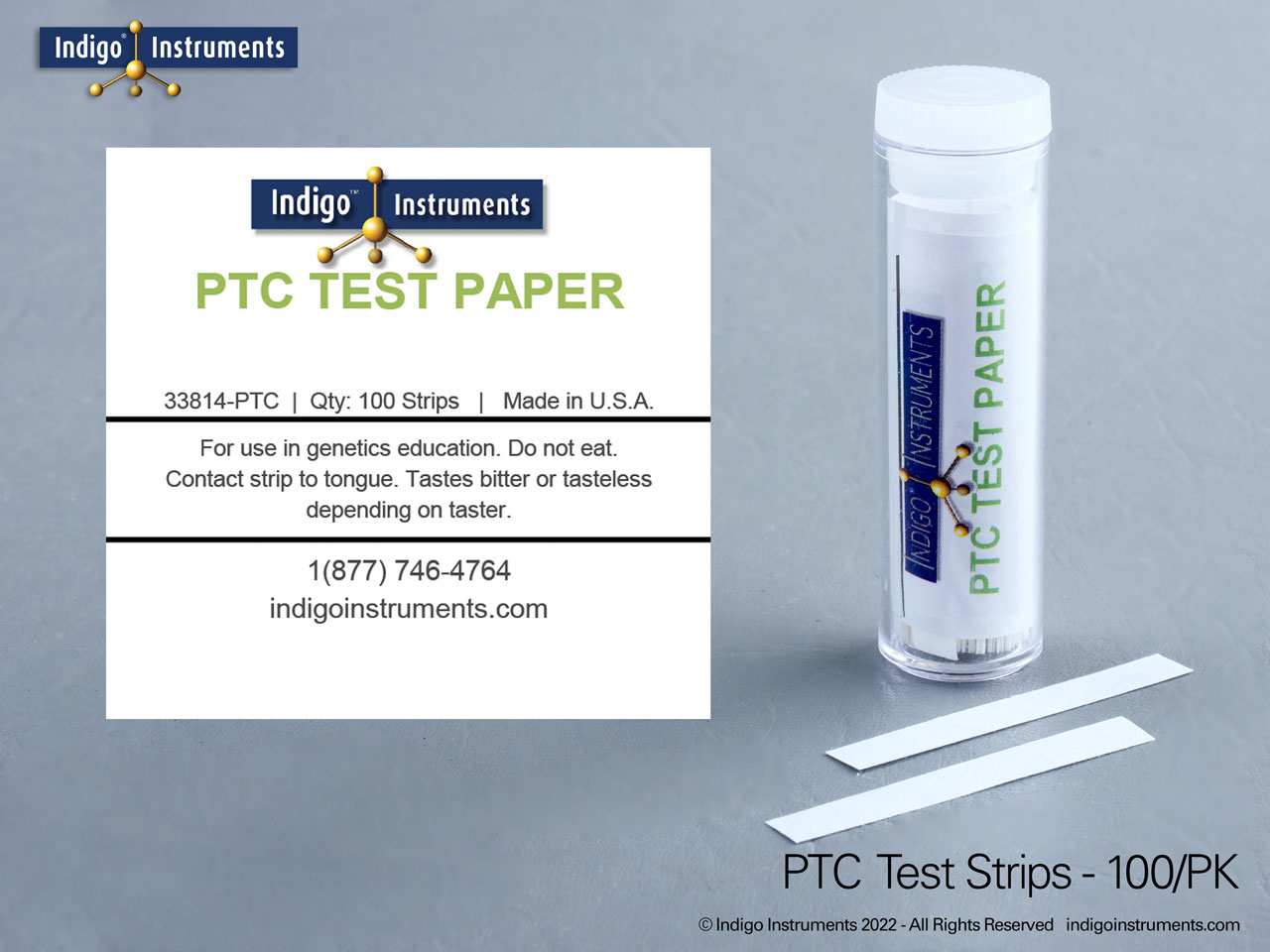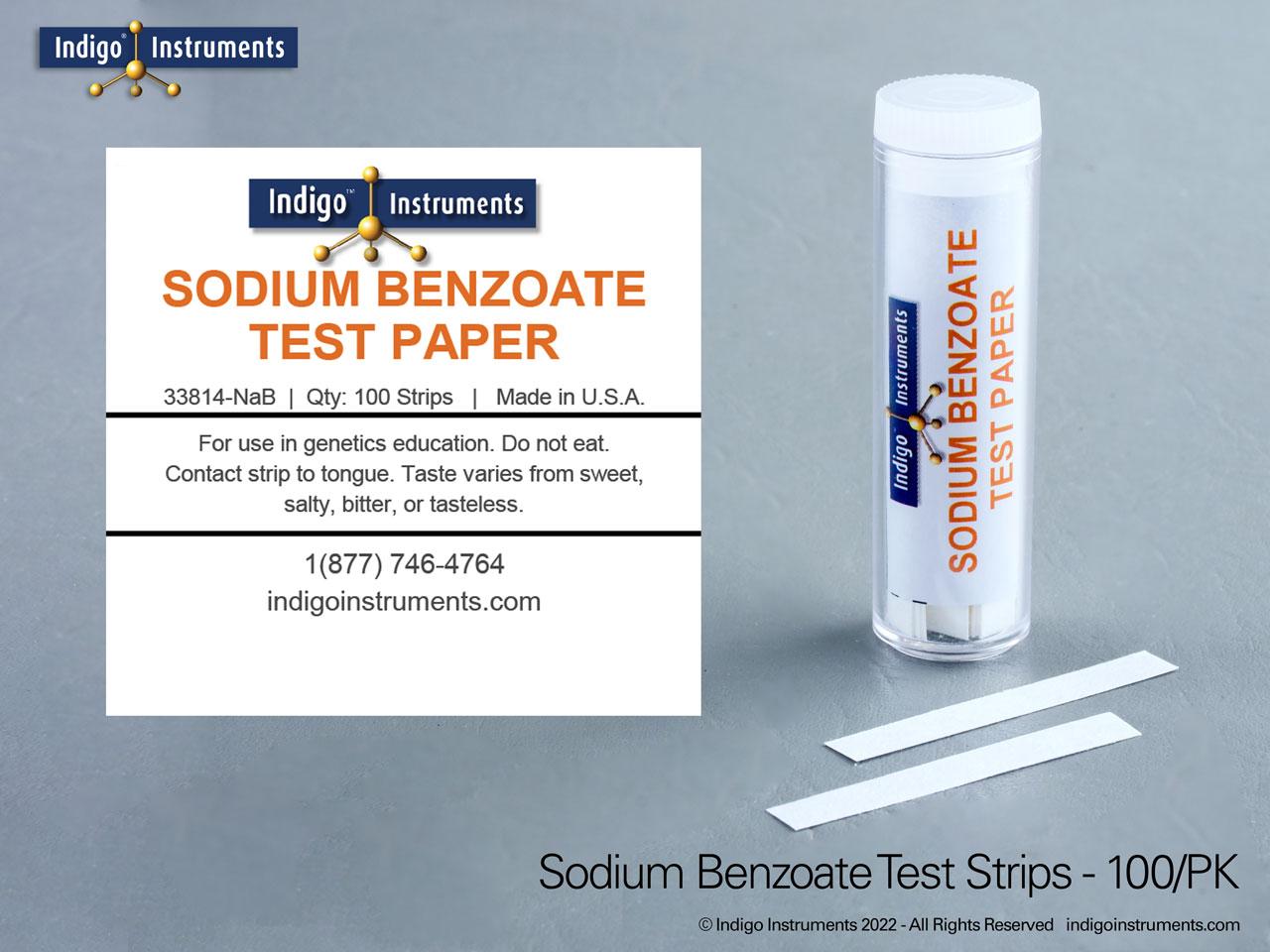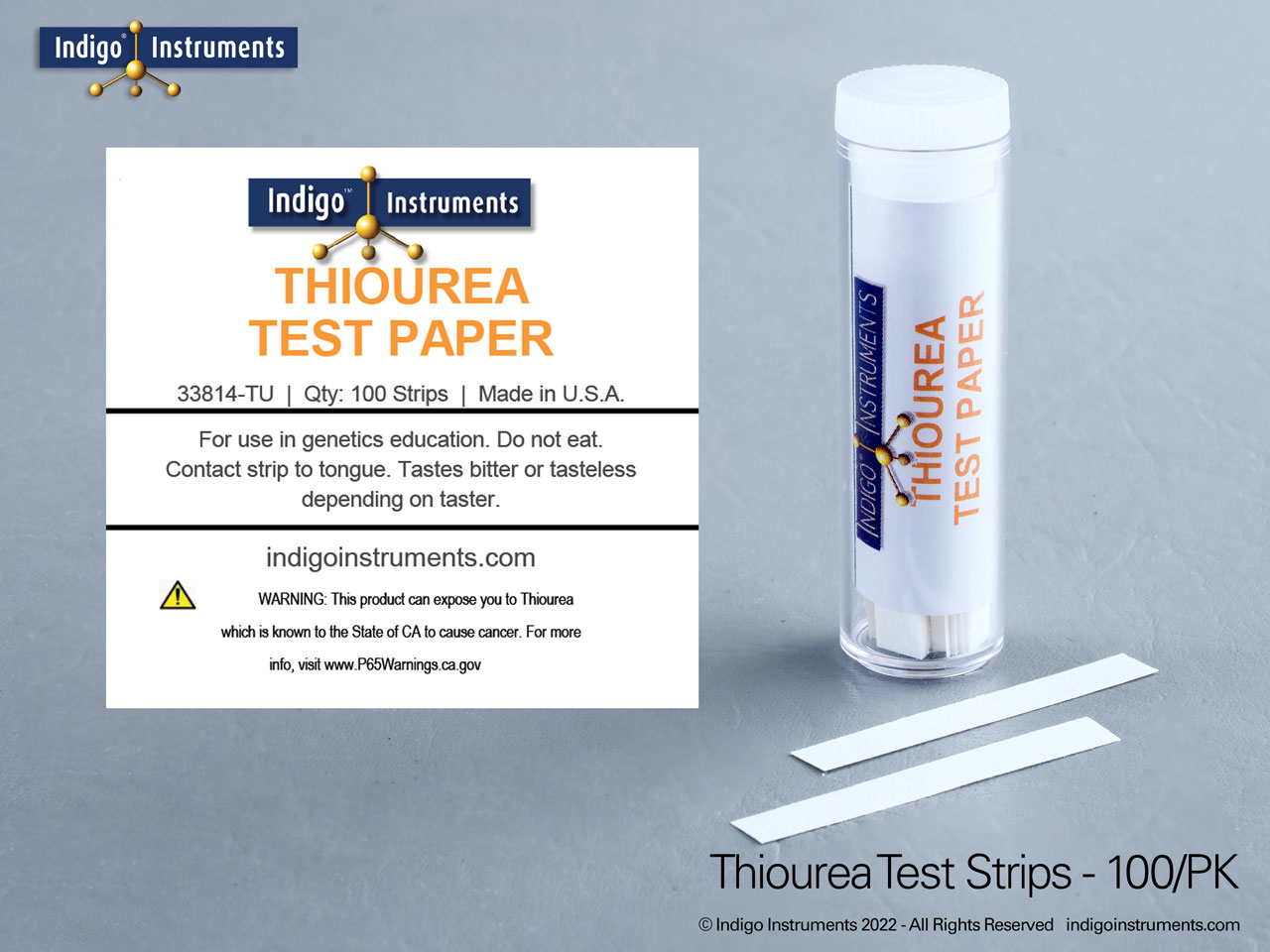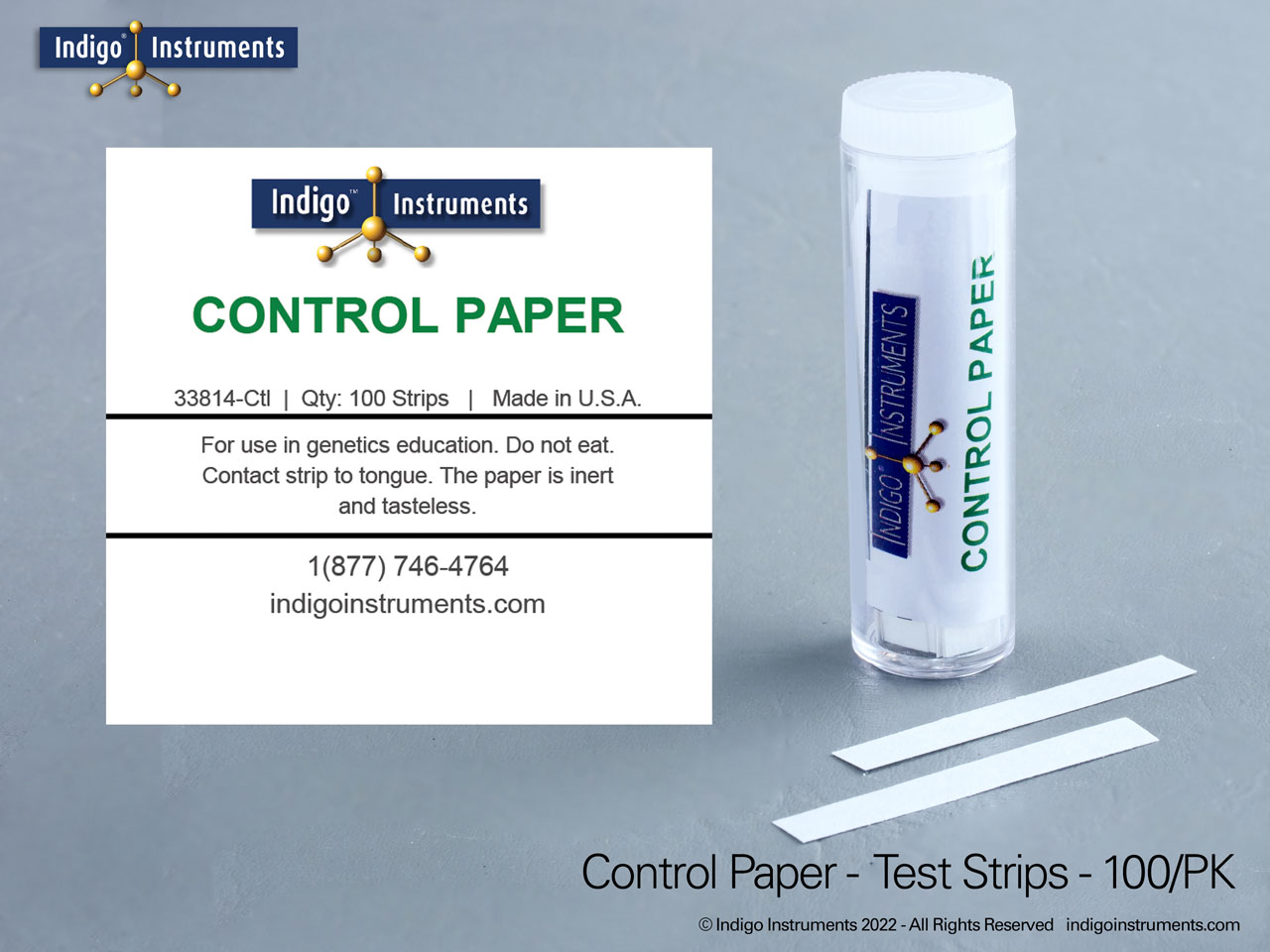Supertaster Test Strips
Make your own super taster genetics lab kit with any combination of Indigo® PTC, thiourea, sodium benzoate & control test papers for taste testing. Use in biology lab experiments to identify the different genotypes by their distribution of dominant & recessive supertasting specific genes. Or, turn it into a fun activity. Your kids' food preferences could be genetic!
All come with 100 test strips/vial and a minimum guaranteed 3 year shelf life. Full documentation provided including a Stability Statement, Certificate of Analysis & SDS. Optional next day delivery for any quantity of most items.
Buy Indigo® test strips, the brand you can trust for accuracy & technical support. Call us on our toll free line for immediate assistance or e-mail us with your questions. 1 hour response is typical during business hours, M-F, slightly longer on weekends.
Indigo® Supertaster Test Strips
Taste test strips are mainly used in biology labs to help understand statistics as it relates to genetic variability. This information can be used in a very different & interesting way.
When people are asked to group themselves by perceived common values they do so by age, sex, race, etc. Since the genes for tasting follow a normal distribution across human populations, if you now group people by those results you will end up with a completely different mix that crosses all the other barriers. It's a great way to show that people have much more in common with each other than they thought & a greater appreciation for our diversity as a species.
What is a supertaster?
A supertaster senses flavors more strongly than the average person. They have many more taste buds and are particularly sensitive to bitter foods such as broccoli, spinach, coffee, beer, and chocolate. This characteristic is inherited by roughly 25% of the population, more often in women. Flavors we taste are broadly grouped as sweet, salty, bitter, sour & umami. Use Indigo® taste test paper strips in your supertaster quiz and find out if you, your family or friends have the supertaster gene.
The reason for our supertasting ability is unclear but sensitivity to bitter compounds may relate to our recognizing potentially toxic plant alkaloids since this trait is in ~75% of people who taste PTC. This may also be of benefit in avoiding spoiled foods. Read Expiration Dates Are Meaningless & why we evolved a disgust response
See the Scientific American article: Super-Tasting Science: Find Out If You're a "Supertaster"!. It even includes instructions on how you can compare the number of taste buds on your tongue to that of your friends.

